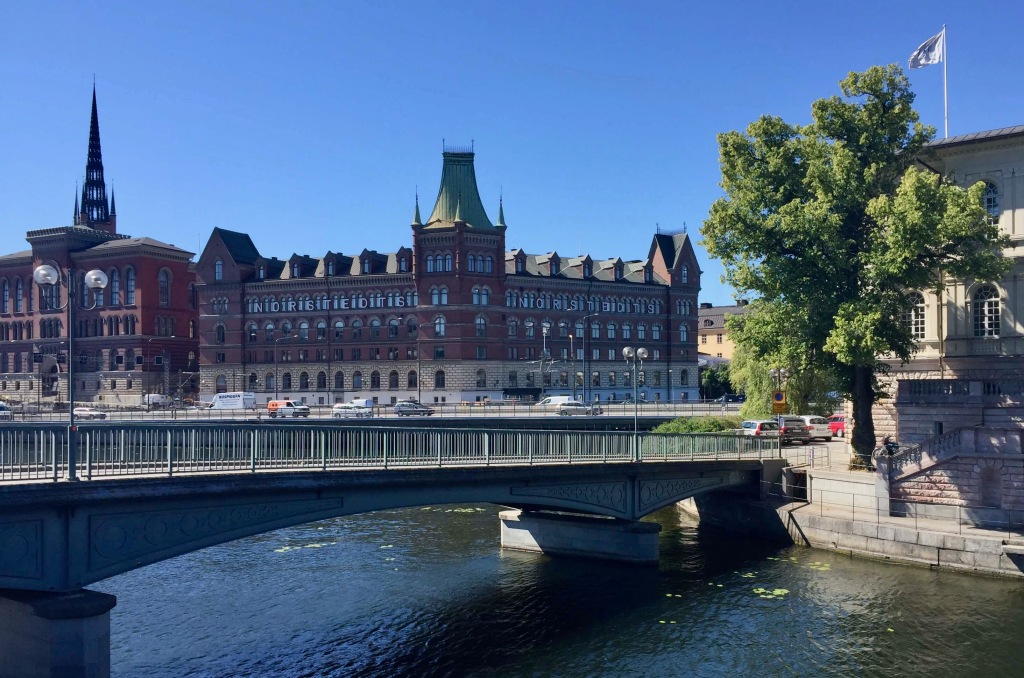
On my very first day in Sweden as a new international student, the welcome reception was broken up by fika, the classic Swedish coffee break. While I sipped the strong black coffee, university staff made their way through the gathering with huge baskets of another essential Swedish tradition: the kanelbulle, or cinnamon bun. Despite the ubiquity of cinnamon buns in mall kiosks and in ready-to-bake tubes in America, they were actually invented in Sweden.
Kanelbullar are humbler than their syrupy, frosting-laden American cousins. For a start, there’s the topping. Rather than a thick layer of gooey frosting, kanelbullar are decorated with pärlsocker (pearl sugar), a crunchy form of white sugar used primarily in northern Europe. Without the frosting dripping everywhere, kanelbullar can be served more neatly, usually on a corrugated paper disk that resembles a cupcake liner.
The shape is important too. Though they often come in the basic spiral (kanelsnäcka, or ”cinnamon snail”) form, there are many variations. Bakeries often weave them into intricate knots. A kanellängd, or ”cinnamon length” is the entire batch roll braided lengthwise rather than cut into separate buns, while a hagabulle, a Gothenburg specialty, is a massive individual spiral nearly a foot in diameter.

And finally, there is their unique flavor. Of course the flavor comes mainly from the buttery cinnamon-sugar filling. Cinnamon is an ancient spice that was known in Europe as early as the fourteenth century. The legendary sixteenth century Swedish king Gustav Vasa is said to have been very fond of it, and imported large quantities from Sri Lanka. Since then, it’s become a household spice that is integrated into cuisines throughout Europe and America.
Kanelbullar typically are not particularly sweet. Rather, the dough has a subtle sweetness from the addition of another, less common spice, that also arrived in the Middle Ages: cardamom. Native to southern India and common in Indian and Middle Eastern cuisine, cardamom was long thought to have been brought back to Scandinavia by Viking raids of modern-day Turkey, but it more likely arrived via the Moors, the Islamic north Africans who ruled over Spain during the Middle Ages. It’s interesting to consider that while cardamom is imported by many countries to cater to their Indian and Middle Eastern communities, Sweden is one of the only Western countries that imports it for use in its own native cuisine.
Though the ingredients were around for many centuries, it wasn’t until the end of the first world war, when the imported spices became more easily accessible, that cinnamon and cardamom were finally incorporated by Swedish bakers to produce the kanelbulle. But it would take a few more decades for the price of the spices to drop enough that the kanelbulle could be served with the daily fika, beginning in the 1950s. Nowadays, the two words are irrefutably linked, and you’re unlikely to find a café, konditori, or convenience store anywhere in the country that doesn’t have a platter of kanelbullar on display.
In the weeks and months following my arrival in Sweden, I grew very fond of the fifteen-minute breaks in the middle of classes that allowed me to cross the street and pick up my 7-Eleven fika combo for only 25 kronor. It was there after several bungled attempts that I learned the correct pronunciation: ka-neel-boo-leh, with emphasis on the second syllable.
With a bit of background on the Swedish cinnamon bun, we can now get to the main event: today is Kanelbullens dag, or Cinnamon Bun Day. Though seemingly quirky, this celebration has enjoyed great popularity in Sweden since its founding twenty-one years ago. The number of kanelbullar sold each year on October 4 nearly matches the population of the country – and that doesn’t include the homemade ones! Speaking of homemade, you can join in the festivities with the ”official” recipe from Sweden.se – I will certainly be celebrating!
Glad Kanelbullens dag!

your blog is amazing!
LikeLiked by 1 person